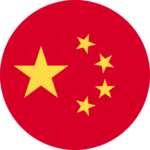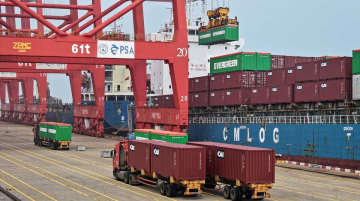
By Rebecca Ray and Zara C. Albright
In 2022, the Latin America and Caribbean (LAC) region’s trade deficit in goods with China grew to a record 1.4 percent of regional GDP, as both sides of the relationship experienced uneven growth rebounds from the COVID-19 pandemic. Among LAC countries, though, the experience has been quite varied, with mining countries like Chile and Peru posting significant trade surpluses, while agricultural exporters like Argentina experienced noteworthy deficits.
This is among the findings of the China-LAC Economic Bulletin, 2023, the tenth annual update by the Boston University Global Development Policy Center summarizing and synthesizing the latest trends in the China-LAC economic relationship, with data up to March 2023.
Over the last 20 years, China has become the top export market for South America and the second export market for the LAC region. Figure 1 explores this growth, showing the extent to which each LAC country sent their exports disproportionately to one top export market: blue for the United States, yellow for the European Union and red for China.
Figure 1: LAC’s Top Export Markets in 2001 and 2021

Source: Boston University Global Development Policy Center, 2023.
Five countries – Brazil, Chile, Cuba, Peru and Uruguay – switched from yellow in 2001 to pink in 2021, indicating a shift from the EU to China as their primary export market. Just one country switched from blue to pink: Venezuela, which currently faces sanctions limiting its exports to the US. Just as importantly, the region as a whole has shifted toward lighter colors, showing a preference to export to multiple partners rather than relying on any one major trading market. No countries appear in medium or dark red, and only two (Paraguay and St. Vincent and the Grenadines) appear in medium or dark yellow in 2021. Several others appear in a lighter shade of the same color in 2021 as in 2001, indicating a shift toward a more diversified export market.
These shifts help explain the recent uptick in LAC countries seeking free trade agreements (FTAs) with China, including Ecuador, Colombia, Panama and Uruguay. Ecuador concluded negotiations December, Uruguay has concluded a feasibility study for beginning negotiations, while Panama and Colombia have seen negotiations stall but may re-gain momentum amid the progress with Ecuador and Uruguay. These four countries join Costa Rica, Chile and Peru, who have had FTAs in effect with China for over a decade.
Both Ecuador and Uruguay have made public statements touting the potential for their FTAs with China to stimulate non-traditional export sectors, but in the past, LAC-China exports have primarily relied on raw commodities with little value-added on the LAC side. Furthermore, past LAC FTAs, such as the proposed EU-Mercosur deal, have met with criticism for furthering the region’s dependence on low-technology sectors.
This new wave of FTAs reflects a diversified export market for a region with a long history of seeking to incorporate more industrial growth into commodity-based production bases. If these FTAs succeed in bolstering LAC industrial development or other non-traditional sectors, it will represent an important step toward LAC governments leveraging their relationships with China to further their own domestic economic goals.
*
Rebecca Ray is a Senior Academic Researcher with the Boston University Global Development Policy Center.Her work focuses on the nexus of international development finance, particularly China’s role in reshaping the global financial landscape and on sustainable development, primarily in Latin America. Follow her on Twitter: @BUBeckyRay.
Zara C. Albright is a Global China Pre-doctoral Research Fellow with the Boston University Global Development Policy Center and a Ph. D. student in the Political Science department at Boston University, where she studies global development and political economy, specifically in Latin America’s relationship with China. Follow her on Twitter: @AlbrightZara.






